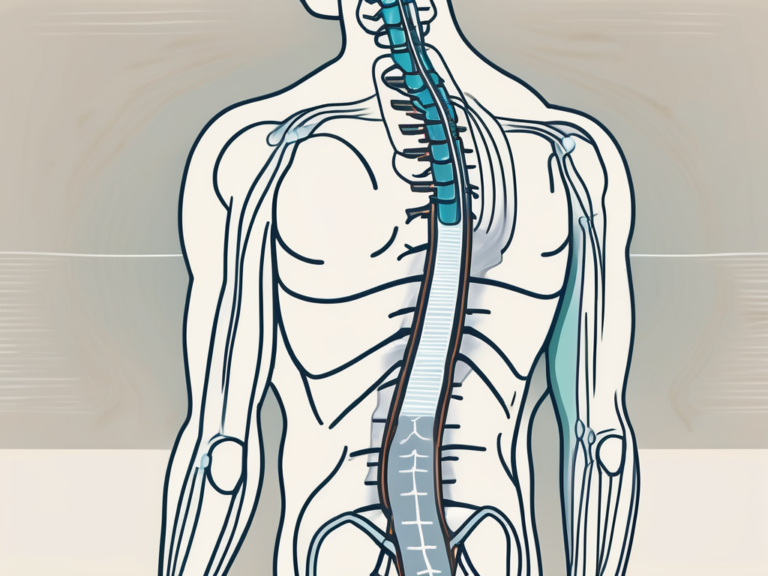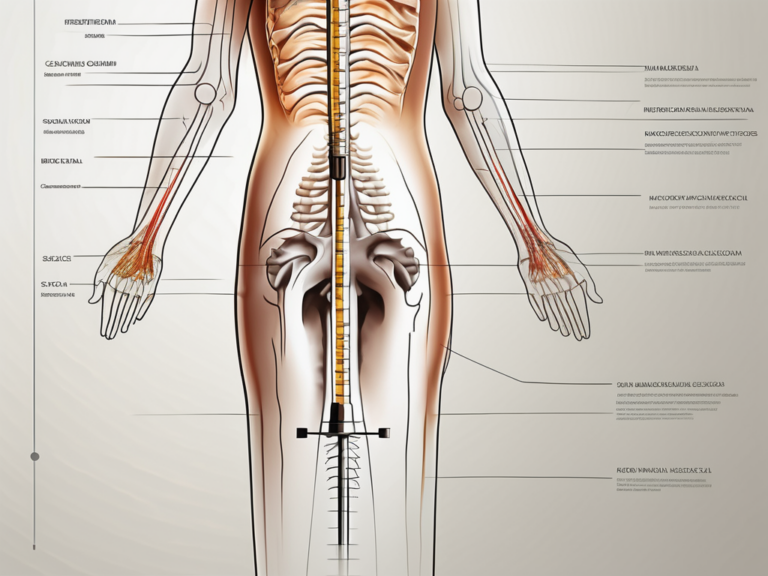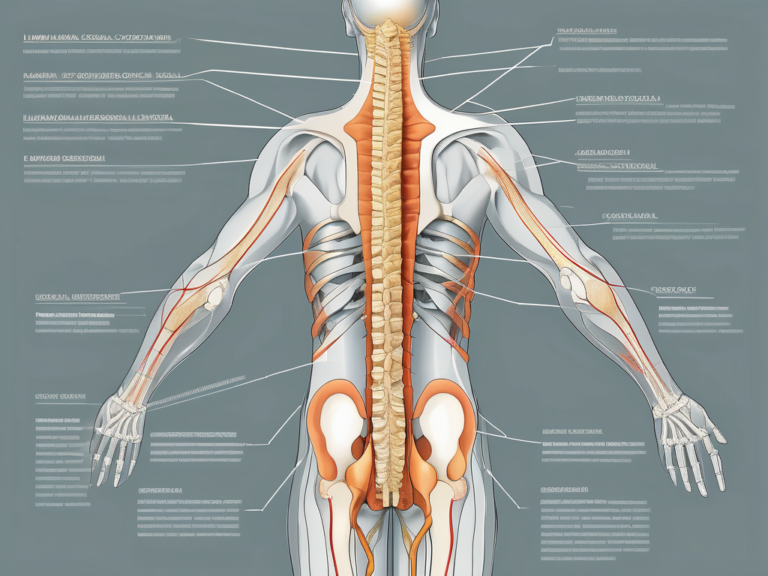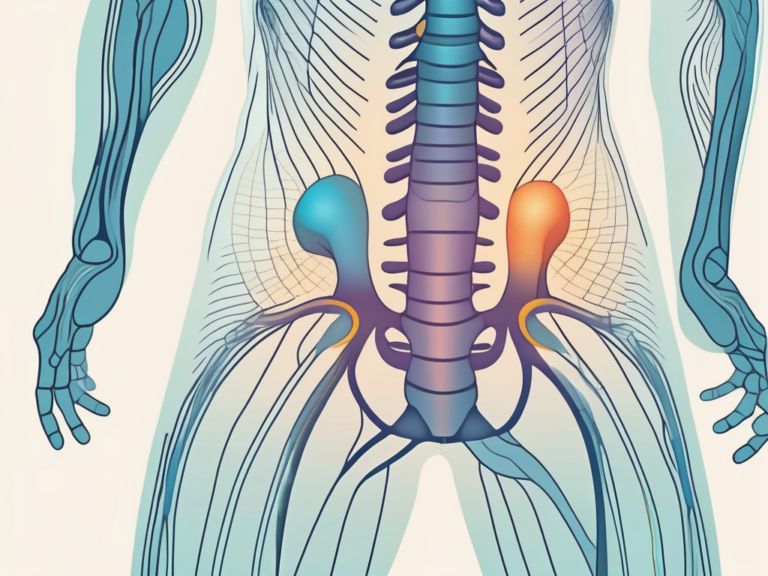How to Relieve Sacral Nerve Pain: Effective Methods and Remedies
Sacral nerve pain can be debilitating and have a significant impact on daily life. If you or someone you know is experiencing this type of pain, understanding the causes and available treatment options can help provide relief and improve overall well-being.
Understanding Sacral Nerve Pain
Sacral nerve pain, also known as sacral neuralgia or sacralgia, refers to pain that originates from the sacral nerves located in the lower back and extends down the legs. These nerves play a crucial role in transmitting signals to and from the brain, controlling various functions such as movement and sensation in the lower body.
The sacral nerves are a part of the larger network of nerves known as the peripheral nervous system. They are responsible for carrying sensory information from the lower body to the brain and transmitting motor commands from the brain to the muscles in the lower body. When these nerves become irritated or compressed, it can lead to the development of sacral nerve pain.
What is Sacral Nerve Pain?
Sacral nerve pain occurs when there is irritation or compression of the nerves in the sacral region. This can be caused by a variety of factors, including injury, inflammation, or pressure on the nerves.
Injury to the sacral nerves can occur as a result of trauma, such as a fall or car accident. Inflammation of the nerves can be caused by conditions like arthritis or infections. Pressure on the nerves can be due to conditions like spinal stenosis, herniated discs, or sacroiliitis.
When the sacral nerves are irritated or compressed, they can send abnormal signals to the brain, resulting in the sensation of pain. This pain can range from mild to severe and may be accompanied by other symptoms.
Common Causes of Sacral Nerve Pain
There are several common causes of sacral nerve pain, including:
- Sciatica: Compression or irritation of the sciatic nerve, which originates in the lower back and extends down the legs. This can occur due to a herniated disc, spinal stenosis, or muscle imbalances.
- Spinal stenosis: Narrowing of the spinal canal, leading to pressure on the nerves. This can be caused by age-related changes in the spine, such as the development of bone spurs or thickened ligaments.
- Herniated disc: A condition where the gel-like center of a spinal disc protrudes and presses on surrounding nerves. This can occur due to age-related degeneration of the discs or trauma to the spine.
- Sacroiliitis: Inflammation of the sacroiliac joint, which connects the sacrum to the pelvis. This can be caused by conditions like arthritis, infection, or pregnancy.
It is important to note that sacral nerve pain can have multiple causes, and a thorough evaluation by a healthcare professional is necessary to determine the underlying cause and develop an appropriate treatment plan.
Symptoms Associated with Sacral Nerve Pain
Sacral nerve pain can manifest in a variety of ways, including:
- Sharp, shooting pain in the lower back, buttocks, or legs. This pain may be intermittent or constant and can range in severity.
- Numbness or tingling sensation in the affected area. This can be described as a “pins and needles” sensation or a loss of sensation altogether.
- Muscle weakness or difficulty walking. The compression or irritation of the sacral nerves can affect the muscles in the lower body, leading to weakness or difficulty with certain movements.
- Loss of bladder or bowel control (in severe cases). In rare instances, severe compression or damage to the sacral nerves can result in the loss of control over bladder or bowel function. This is a serious symptom that requires immediate medical attention.
It is important to seek medical attention if you experience any of these symptoms, as early diagnosis and treatment can help alleviate pain and prevent further complications.
Non-Surgical Remedies for Sacral Nerve Pain
Non-surgical treatments can often provide relief for sacral nerve pain. These methods focus on reducing inflammation, improving mobility, and managing pain without the need for invasive procedures.
Sacral nerve pain, also known as sacral radiculopathy, occurs when there is irritation or compression of the nerves in the sacral region of the spine. This can result in pain, numbness, and weakness in the lower back, buttocks, and legs. While surgery may be necessary in some cases, non-surgical remedies are often the first line of treatment.
Physical Therapy Techniques
Physical therapy can be an effective treatment option for sacral nerve pain. A skilled physical therapist can design a personalized exercise program to strengthen the muscles supporting the spine, improve flexibility, and reduce pain. Techniques such as ultrasound therapy, heat therapy, and electrical stimulation may also be used to provide pain relief.
During physical therapy sessions, the therapist will guide you through various exercises and stretches that target the affected area. These exercises help to improve blood flow, reduce inflammation, and promote healing. The therapist may also use manual techniques, such as massage or joint mobilization, to alleviate muscle tension and improve mobility.
Over-the-Counter Pain Relievers
Over-the-counter pain relievers, such as nonsteroidal anti-inflammatory drugs (NSAIDs), can help manage sacral nerve pain. These medications work by reducing inflammation and alleviating pain. However, it is important to consult with a healthcare professional before using any medication to ensure it is safe and appropriate for your specific condition.
NSAIDs are available in various forms, including tablets, creams, and gels. They can be taken orally or applied topically to the affected area. It is important to follow the recommended dosage and duration of use to avoid any potential side effects. If over-the-counter pain relievers are not providing sufficient relief, your healthcare provider may prescribe stronger medications.
Lifestyle Changes for Pain Management
Simple lifestyle changes can significantly contribute to pain management. Maintaining good posture, regular exercise, and avoiding activities that exacerbate the pain can help alleviate symptoms. Additionally, applying heat or cold packs to the affected area and practicing relaxation techniques, such as deep breathing or meditation, may provide relief.
Good posture is essential for spinal health and can help reduce strain on the sacral nerves. It is important to sit and stand with a straight back, avoiding slouching or hunching. Regular exercise, such as walking or swimming, can help strengthen the muscles supporting the spine and improve overall flexibility.
When experiencing sacral nerve pain, it is important to avoid activities that put excessive strain on the lower back, such as heavy lifting or high-impact exercises. Instead, opt for low-impact activities that promote gentle movement and flexibility. Applying heat or cold packs to the affected area can help reduce inflammation and provide temporary pain relief.
Managing stress and practicing relaxation techniques can also be beneficial in managing sacral nerve pain. Stress can exacerbate pain and tension in the body, so finding healthy ways to relax and unwind is important. Deep breathing exercises, meditation, and gentle stretching can help calm the mind and reduce muscle tension.
Overall, non-surgical remedies for sacral nerve pain can be effective in reducing inflammation, improving mobility, and managing pain. Physical therapy techniques, over-the-counter pain relievers, and lifestyle changes all play a role in providing relief and promoting healing. It is important to work closely with your healthcare provider to develop a comprehensive treatment plan tailored to your specific needs.
Surgical Treatments for Sacral Nerve Pain
In some cases, non-surgical treatments may not provide sufficient relief, and surgical intervention may be necessary to address the underlying cause of the sacral nerve pain.
Sacral nerve pain can be a debilitating condition that significantly impacts a person’s quality of life. It can cause chronic discomfort, difficulty with mobility, and even affect one’s emotional well-being. When conservative treatments fail to provide adequate relief, surgical options may be considered to alleviate the pain and restore functionality.
Nerve Decompression Surgery
Nerve decompression surgery aims to relieve pressure on the affected nerves by removing any structures that may be compressing them. This procedure is typically performed in cases where nerves are pinched or trapped, such as with herniated discs or spinal stenosis.
During the surgery, the surgeon carefully identifies the source of compression and takes steps to release the pressure on the affected nerves. This can involve removing a portion of a herniated disc, widening the spinal canal in cases of spinal stenosis, or repositioning any other structures that may be impinging on the nerves.
While nerve decompression surgery can provide significant relief for sacral nerve pain, it is important to note that it is not without risks. As with any surgical procedure, there is a potential for complications such as infection, bleeding, or nerve damage. However, these risks are generally low, and the potential benefits of pain relief and improved functionality often outweigh them.
Spinal Cord Stimulation
Spinal cord stimulation is a procedure where a small device is implanted near the spinal cord to deliver electrical impulses that interfere with pain signals. This technique can help alleviate pain and improve quality of life for individuals with sacral nerve pain.
During the procedure, a thin wire with electrodes is placed near the spinal cord, and a small generator is implanted under the skin. The generator produces mild electrical impulses that target the nerves responsible for transmitting pain signals. These impulses effectively disrupt the pain signals, providing relief to the patient.
Spinal cord stimulation is often considered when other surgical options have not provided sufficient relief or when the underlying cause of the sacral nerve pain cannot be surgically corrected. It offers a non-destructive and reversible approach to pain management, allowing patients to adjust the stimulation levels according to their needs.
Risks and Benefits of Surgical Treatments
Surgical treatments for sacral nerve pain carry certain risks, as with any surgical procedure. It is essential to consult with a healthcare professional to understand the potential benefits and risks associated with each treatment option before making a decision.
While surgical interventions can provide significant relief for sacral nerve pain, it is important to note that they are not always a guaranteed solution. Each individual’s case is unique, and the success of the surgery depends on various factors, including the underlying cause of the pain, the patient’s overall health, and their ability to follow post-operative care instructions.
Before undergoing surgery, it is crucial for patients to have a thorough discussion with their healthcare provider. This conversation should include a detailed explanation of the procedure, the expected outcomes, potential risks, and any alternative treatment options available. By having all the necessary information, patients can make an informed decision about their treatment plan.
Alternative Therapies for Sacral Nerve Pain
In addition to conventional treatments, several alternative therapies have shown promise in relieving sacral nerve pain.
Sacral nerve pain can be a debilitating condition that affects the lower back, buttocks, and legs. It can cause sharp, shooting pain, numbness, and tingling sensations, making it difficult to perform daily activities. While conventional treatments such as pain medications and physical therapy can provide relief, some individuals may seek alternative therapies to complement their treatment plan.
Acupuncture and Sacral Nerve Pain
Acupuncture involves the insertion of thin needles into specific points on the body, stimulating nerve pathways and promoting pain relief. This ancient Chinese practice has been used for centuries to address various health conditions, including pain management. While evidence supporting its effectiveness for sacral nerve pain is limited, some individuals find acupuncture to be helpful in reducing pain and improving overall well-being.
During an acupuncture session, a trained practitioner will carefully insert needles into specific points along the body’s meridians. These meridians are believed to be channels through which energy, or Qi, flows. By stimulating these points, acupuncture aims to restore the balance of Qi and promote healing.
While the exact mechanisms of how acupuncture works are still not fully understood, some theories suggest that it may stimulate the release of endorphins, the body’s natural painkillers. Additionally, acupuncture may help improve blood circulation and reduce inflammation, which can contribute to pain relief.
Chiropractic Care for Sacral Nerve Pain
Chiropractic care involves manual adjustments of the spine to realign the vertebrae and relieve pressure on the nerves. This can help alleviate sacral nerve pain for some individuals. However, it is important to consult with a qualified chiropractor and inform them of your specific condition before pursuing this treatment option.
A chiropractor will perform a thorough examination to assess the alignment of your spine and identify any areas of dysfunction. They may use techniques such as spinal manipulation, mobilization, or traction to restore proper alignment and relieve pressure on the sacral nerves.
Chiropractic care is based on the principle that the body has the innate ability to heal itself. By addressing misalignments in the spine, chiropractors aim to restore the body’s natural balance and promote optimal functioning of the nervous system.
Yoga and Meditation for Pain Relief
Yoga and meditation can help reduce stress, promote relaxation, and improve overall well-being, which may indirectly alleviate sacral nerve pain. Engaging in gentle stretching exercises and incorporating mindfulness practices into daily life can assist with pain management.
Yoga combines physical postures, breathing exercises, and meditation to create a holistic approach to health and well-being. Certain yoga poses can help stretch and strengthen the muscles surrounding the sacral area, providing support and reducing pain. Additionally, the practice of deep breathing and meditation can help calm the mind and reduce stress, which can contribute to pain relief.
When practicing yoga for sacral nerve pain, it is important to listen to your body and work within your limits. Consulting with a qualified yoga instructor who has experience working with individuals with similar conditions can be beneficial in designing a safe and effective yoga practice.
Incorporating meditation into your daily routine can also be beneficial for managing sacral nerve pain. Meditation involves focusing the mind and cultivating a state of present-moment awareness. By redirecting attention away from pain and towards the breath or a specific point of focus, meditation can help reduce the perception of pain and promote a sense of calm.
It is important to note that while alternative therapies such as acupuncture, chiropractic care, yoga, and meditation may provide relief for some individuals with sacral nerve pain, they may not be suitable for everyone. It is always recommended to consult with a healthcare professional before starting any new treatment or therapy.
Coping with Sacral Nerve Pain
Coping with sacral nerve pain can be challenging, both physically and emotionally. It is important to address the emotional impact of chronic pain and seek support when needed.
Emotional Impact of Chronic Pain
Chronic pain can take a toll on mental health, leading to feelings of frustration, anxiety, and depression. Seeking counseling or therapy can provide valuable support and help develop coping strategies to manage the emotional challenges associated with sacral nerve pain.
Support Systems and Resources
Building a strong support system is crucial for individuals with sacral nerve pain. This can include seeking support from family and friends, joining support groups, or connecting with online communities. Additionally, healthcare professionals and pain management clinics can provide specialized resources and guidance.
Maintaining Quality of Life with Sacral Nerve Pain
While sacral nerve pain can be disruptive, it is important to focus on maintaining a good quality of life. This may involve making adjustments in daily activities, seeking alternative hobbies or interests, and engaging in activities that bring joy and fulfillment.
Remember, this article provides general information and is not a substitute for professional medical advice. If you are experiencing sacral nerve pain, it is essential to consult with a qualified healthcare professional for a proper diagnosis and personalized treatment plan.



